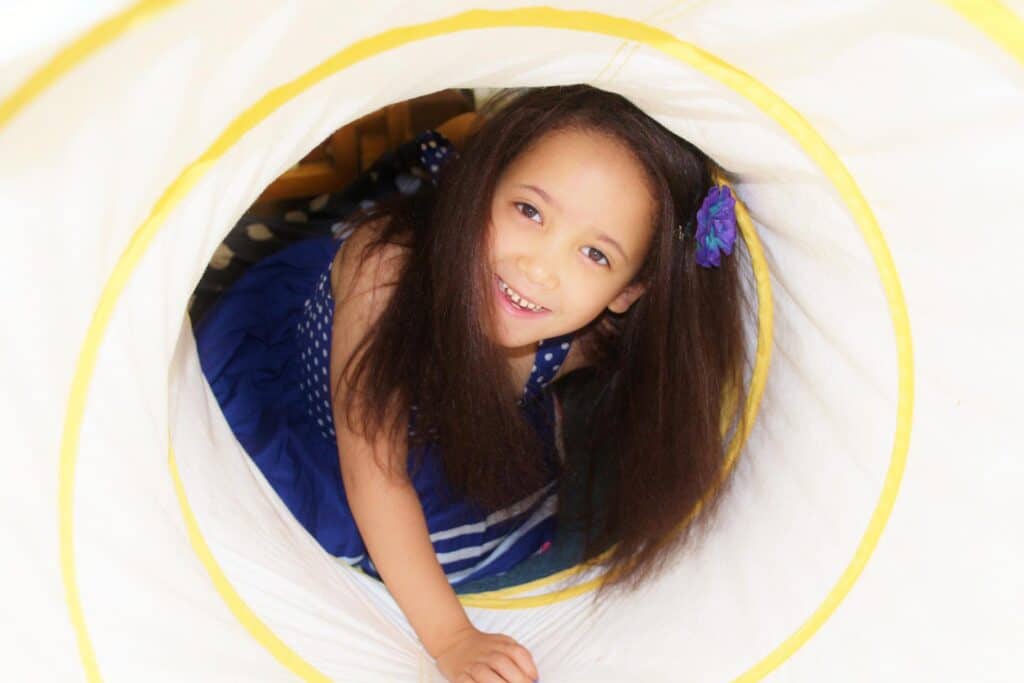Children have A LOT to learn when starting to speak! Articulation, the sounds a child makes when speaking, is an important aspect of a child’s expressive communication that may require help from an expert.
When a child struggles to produce speech sounds by a certain age, a Speech-Language Pathologist (SLP) can help them to improve their articulation (pronunciation) in fun and motivating sessions tailored to your child’s specific articulation needs. This article will help you to understand speech sound development and when to contact a Speech-Language Pathologist (SLP) if your child is having difficulty saying their speech sounds.
Early speech development
Did you know babies first begin to learn the sounds of a language before they are even born? They do! A baby listens to the sounds they hear in their mother’s voice.
Once out of the womb, babies begin “cooing” by making vowel-like sounds around 4-6 months of age. Their first real consonant speech sound appears around 6-10 months and is called “babbling” – when they start to combine consonant and vowels together. Considering the chart below, it is not surprising that a child’s first word is often “mama!”
When should my child be able to say their speech sounds?
The following speech sound development chart will give you an idea of which speech sounds you can expect your child to start making and the age they should be mastering each sound by:
| Speech sounds | Start making | Mastered by |
| P B M H N W B | First sounds (6 months) | 3 years |
| K G D | 2 years | 4 years |
| T NG (as in siNG) | 2 years | 6 years |
| F Y | 2.5 years | 4.5 years |
| R L S | 3 years | 6.5 years |
| CH SH Z | 3.5 years | 7.5 years |
| J V | 4 years | 7.5 to 8 years |
| Voiceless TH (as in THink) | 4.5 years | 7.5 years |
| Voiced TH (as in THis) | 5 years | 7.5 years |
| ZH (as in meaSure) | 6 years | 8.5 years |
Young children are naturally harder to understand
You may notice that you have a hard time understanding young children’s speech, and that’s normal! As children develop their speech sounds, they increase their intelligibility or ability to be understood by others. Their intelligibility increases approximately by 25% every year from their 1st birthday. When they are 1 year old, you can expect to understand approximately 25% of what they are saying, when they are 2 years old (50%), 3 years old (75%), and when the child is 4-5 years old, you should be able to understand everything they are saying.
Parents can use the above speech sound development chart as well as an intelligibility rating to help them determine if it’s time to reach out to an SLP. An SLP will conduct a speech sound assessment and take a language sample to determine whether therapy is recommended.

What will an articulation assessment uncover?
An SLP will listen and observe the way your child forms their speech sounds to determine whether or not your child is on track or delayed in their speech sound development. If a delay is observed, the cause of the speech difficulties will be related to a Speech Sound Disorder or a Phonological Impairment.
Speech Sound Disorder vs. Phonological Impairment
Speech sound disorders are related to the coordination of the muscles of the mouth. When a child is using an inappropriate position to make a sound, this results in a speech sound error. There are a few different types of errors that a child can make that include: substitution, omission, addition, or distortion.
Some common speech sound disorders involve difficulty pronouncing: R, L, S (lisps), and Y.
Phonological impairments are different to speech sound disorders in that they are not related to the motor coordination of the articulators, but instead to a neurological misunderstanding of the patterns of sounds in a language. If your child is diagnosed with a phonological impairment, they are likely producing errors that follow one or more of the following processes (or patterns):
Substitution Processes (replacing sounds with other sounds)
- Fronting: Sounds made at the front of the mouth with the tip of the tongue are replaced with sounds made at the back of the mouth with the back of the tongue e.g., “guck” for “duck.”
- Backing: Sounds made at the back or mid-mouth with the back or middle of the tongue are replaced with sounds made at the front of the mouth with the tip of the tongue e.g., “got” for “dot”; “tip” for “ship.”
- Stopping: Sounds made with a constant airflow are replaced with sounds made by stopping the airflow, e.g., “pin” for “fin”; “dunk” for “chunk.”
- Other substitution phonological processes include: Affrication, Deaffrication, Alveolorization, Depalatalization, Vowelization, Gliding, Labialization
Assimilation or Syllable Structure Processes:
- Devoicing: a voiced consonant (made with phonation) is replaced with a voiceless consonant, e.g., “cap” for “cab.”
- Cluster reduction: A consonant cluster (two consonants making a single sound) is reduced to a single consonant, e.g., “top” for “stop.”
- Other assimilation or syllable structure processes include: final or initial consonant deletion, weak syllable deletion, epethesis, and dimunization
How an SLP can help:
If your child has a Speech Sound Disorder, your SLP will first identify if your child has a difficult time hearing the difference between the sound they are producing and the sound they are trying to produce. This is called auditory discrimination. Once discrimination is achieved at near-perfect levels, your SLP will develop a treatment plan to target appropriate positioning of the articulators (tongue, lips, teeth, and jaw) to produce an accurate speech sound. See below for a better idea of what articulation looks like.
If your child has a Phonological Impairment, your SLP will first identify the specific patterns that your child’s speech follows. Once identified, your SLP will help your child build up their awareness for the differences between how they are currently making their speech sounds and how to accurately produce their speech sounds. This typically begins with a more in-depth education period for the child related to different linguistic elements of speech (e.g., phonological awareness, phonation, positioning of articulators). SLPs have creative and fun ways to make this learning fun and engaging!
What does Articulation Therapy look like?
Articulation therapy with an Arbutus Speech Therapist entails fun and engaging lessons that help children learn about and practice making accurate speech sounds in a step by step way. Your Arbutus Speech Therapist will work through several levels during articulation therapy, starting with ensuring an accurate sound production in isolation and progressing until the sound is generalized to conversational speech. Once your child can create the sound in conversation, it is considered mastered!
Steps in Articulation Therapy
- Producing an accurate speech sound in isolation (on its own)
- Practicing the target sound in syllables (adding a vowel to the beginning or end)
- Practicing the target sound in words, at the beginning, middle, and end of words
- Practicing the target sound in short phrases
- Practicing the target sound in sentences
- Practicing the target sound in stories or fun activities
- Using the target sound in generalized conversation and in all communicative contexts (automatic use of accurate speech sounds)
- Mastery!
Frequently Asked Questions about Articulation Therapy

Who is more likely to have a speech sound disorder or phonological impairment?
According to Speech and Audiology Canada (SAC), the factors increase the risk of having a speech sound disorder are:
- Family history of speech-language delays/disorders or reading difficulties
- Identified language impairment
- Identified difficulties with phonological awareness (sounding out letters in words)
How long will my child need articulation therapy?
Every child’s speech is different and how long therapy takes depends on a few factors, including:
- Type and number of speech sound errors/phonological processes
- Child’s current intelligibility rating
- Child’s motivation
- Time spent practicing between SLP sessions
Can I help them practice articulation?
It is essential and imperative that parents and caregivers help their child practice between speech therapy sessions. It is recommended to practice every single day for at least 30-45 minutes. Just like exercising your arm or leg muscles, helping your child practice their speech sounds, helps them exercise their articulators. When you help them practice, you are helping your child’s brain to rewire the way they make their speech sounds developing muscle memory that will help them to generalize the sound into their everyday conversation.
Getting Help
Articulation therapy can help children who have speech difficulties learn how to accurately say their speech sounds. A Speech-Language Pathologist is an expert in detecting the root cause of a speech disorder and will develop a treatment plan that specifically targets the areas of concern.
Reach out to Arbutus Speech Therapy today or book a free consultation if you are concerned that your child is not achieving their speech milestones on time.

